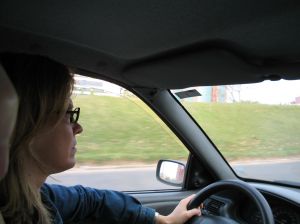NO FEES unless we recover money for you. |
Call 205-391-0618
Office Locations: Tuscaloosa Birmingham
Blog
Alabama Car Accidents & Disproving Contributory Negligence
Mar 6, 2014 - Birmingham, Car Accidents by Cross & Smith
There are many states in which a plaintiff can be at least partially at-fault for an auto accident and still collect compensation – these states adhere to the doctrine of comparative negligence.

The degree to which a plaintiff is negligent is called “comparative fault” and the higher it is, the more it will impact the overall amount of compensation to which a plaintiff is entitled.
Alabama, though, is different. As our Birmingham car accident attorneys must sometimes explain, here, if a plaintiff is partially at-fault the claim is completely barred under a legal doctrine known as contributory negligence.
Per the 1990 decision in John Cowley & Bros., Inc. v. Brown and the 1968 decision in Ala. Power Co. v. Schotz, a plaintiff making a claim based in negligence will lose entitlement to collect damages if it is established that he or she shares fault.
This means that personal injury cases in Alabama are tougher to prove than in most other jurisdictions.
Take for example the Louisiana case of Purvis v. Grant Parish School Board, in which the driver of a car was struck by the driver of a school bus as the two crossed paths on a rural, two-lane road.
We know for sure that there was no striped line and as the two drivers approached a curve in the road, the left front portions of each collided.
The car driver, who sustained serious injury as a result of the crash, sued by the school bus driver and the school district. The case was delegated to a bench trial, that is, one before a judge instead of a jury.
In Louisiana, the model of fault recognized is one of pure comparative fault. That is, except for claims where it is alleged the tort was intentional, the defendant’s liability is offset by whatever degree to which it is determined that the plaintiff was negligent.
So if the court determines the total damages should be $100,000, but the plaintiff shares 20 percent of the fault, only $80,000 will be awarded.
The judge ruled that 40 percent of the fault was apportioned to the plaintiff, finding that it was “most likely” that the school bus driver had encroached the plaintiff’s lane, but that the plaintiff was hugging the center line. The judge determined that although the plaintiff may not have been able to avoid a crash entirely, she had failed to take appropriate evasive action when the two vehicles neared.
If the case had been heard in Alabama, such a ruling would have eliminated the plaintiff’s right to collect damages.
Here, the court awarded the plaintiff $45,000.
She later appealed on the basis that the contributory negligence finding was erroneous, and she should have been awarded a greater sum.
Although the appellate court sided with her, that ruling was later reversed by the Louisiana Supreme Court and the district court’s ruling was reinstated.
Additional Resources:
Purvis v. Grant Parish School Board, Feb. 14, 2014, Louisiana Supreme Court
Categories
- Amputation
- ATV/SUV Rollover Accidents
- Bessemer
- Birmingham
- Bus Accidents
- Car Accidents
- Construction Accidents
- Dangerous Products/Liability
- Defective Medical Devices
- Drunk Driving Accidents
- Firm News
- Medical Malpractice
- Motorcycle Accidents
- Nursing Home Neglect
- Personal Injury
- Pharmaceutical Litigation/Dangerous Drugs
- Premises Liability
- Train Accidents
- Truck Accidents
- Tuscaloosa
- Uncategorized
- Workers' Compensation/Work Injury
- Wrongful Death
Archives
Get a Free Consultation No Recovery. No Fee.
Hear What Our Clients Have To Say
"I highly recommend Cross & Smith. They are an excellent law firm with attorneys who care greatly about the individuals they are representing. "
Posted By: Robert Upchurch
